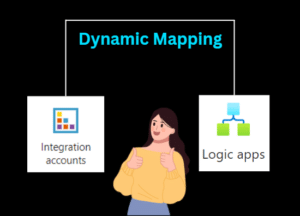Azure Databricks 🧱☁️
Azure Databricks is a powerful, cloud-based platform that provides collaborative data analytics and machine learning capabilities. Developed by Databricks and integrated into Microsoft Azure, it offers a unified solution for data engineering, data science, and business analytics.
What is Azure Databricks?
Azure Databricks is a fully managed, scalable cloud platform designed for big data analytics and AI workloads. It brings together the best of two worlds: the Databricks’ Apache Spark-based analytics engine and the robust capabilities of Azure Cloud. The platform is built to simplify and accelerate the process of building and deploying data pipelines, machine learning models, and AI solutions.
Key Features of Azure Databricks
- Optimized Apache Spark Environment: Azure Databricks runs on a fully optimized version of Apache Spark, offering high performance for batch and streaming data processing. This ensures faster data processing, reduced costs, and the ability to handle large-scale data.
- Collaborative Workspace: It provides a collaborative workspace for data engineers, data scientists, and analysts to work together seamlessly. With shared notebooks, real-time collaboration, and integration with tools like Azure Data Lake, Azure SQL Data Warehouse, and Power BI, teams can efficiently develop and refine data solutions.
- Scalable and Cost-Effective: Built on Azure’s global infrastructure, Azure Databricks provides elastic scaling to handle workloads of any size. You can start small and scale up as needed, optimizing costs with pay-as-you-go pricing.
- Integrated Security and Compliance: Azure Databricks ensures data protection with built-in security features, including role-based access control, data encryption, and seamless integration with Azure Active Directory. It complies with various regulatory standards, making it suitable for industries like healthcare, finance, and government.
- Machine Learning Capabilities: The platform offers a suite of tools and frameworks for machine learning, including AutoML, MLflow, and integration with Azure Machine Learning. This makes it easier to build, train, and deploy models at scale.
- Support for Multiple Languages: Azure Databricks supports Python, Scala, R, and SQL, allowing developers and data scientists to use their preferred languages and libraries.
Use Cases of Azure Databricks
- Data Engineering: Simplify and accelerate data engineering workflows by building data pipelines with high-performance Apache Spark clusters. It enables ingesting, transforming, and loading (ETL) massive datasets efficiently.
- Data Science and Machine Learning: Build and train machine learning models with Azure Databricks’ integrated machine learning environment. Use distributed computing to handle large datasets and leverage AutoML for rapid experimentation.
- Business Intelligence and Analytics: Combine Databricks with Azure services like Power BI to enable real-time analytics and reporting. This integration allows organizations to visualize data insights and make data-driven decisions.
- Real-time Stream Processing: Use Azure Databricks for processing real-time data streams from various sources, such as IoT devices, social media, and web applications. This is ideal for use cases like fraud detection, anomaly detection, and customer behavior analysis.
Getting Started with Azure Databricks
- Create an Azure Databricks Workspace: Sign in to your Azure portal and create a Databricks workspace by selecting the desired subscription, resource group, and region.
- Cluster Configuration: Set up a Databricks cluster by choosing the cluster type, size, and other settings based on your workload requirements.
- Develop Notebooks: Start building your data solutions by creating notebooks using Python, SQL, R, or Scala. Collaborate with your team by sharing these notebooks in real-time.
- Integrate with Azure Services: Leverage Azure services like Azure Data Lake Storage, Azure SQL Database, and Power BI to enhance your data workflows.
- Deploy and Monitor: Once your data pipelines or machine learning models are ready, deploy them to production and use Azure’s monitoring tools to keep track of performance and optimize as needed.
Benefits of Using Azure Databricks
- Speed and Efficiency: Optimize data processing and machine learning tasks with a fully managed Apache Spark environment.
- Collaboration: Empower teams to collaborate in a unified workspace, reducing silos and improving productivity.
- Scalability: Seamlessly scale your data workloads from small datasets to large-scale production environments.
- Cost Management: Leverage Azure’s pay-as-you-go model and optimized cluster management to reduce costs.
- Security and Compliance: Ensure data security and compliance with industry standards through built-in security features.
Conclusion
Azure Databricks is an essential tool for organizations looking to leverage big data and AI to drive innovation and growth. Its ability to unify data engineering, data science, and analytics in a secure, collaborative environment makes it an attractive choice for businesses across various sectors. Whether you are just starting with data analytics or looking to enhance your existing data strategy, Azure Databricks offers a comprehensive solution to meet your needs.
Thanks for stopping by! Your visit means a lot. Please Follow me😊 Stay tuned for more content. Exciting stuff coming your way soon! 🚀 #StayTuned.














Post Comment
You must be logged in to post a comment.